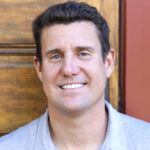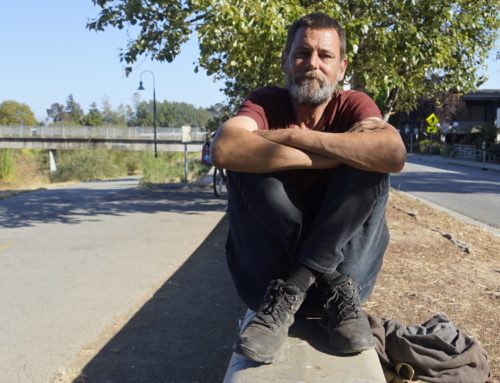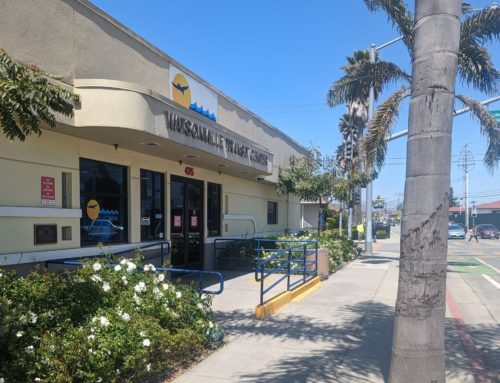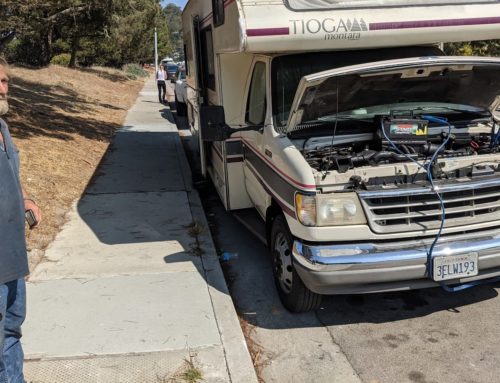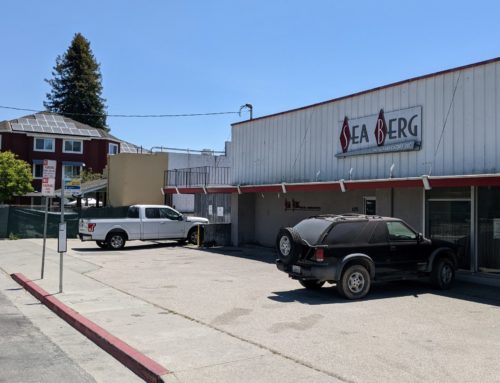Residents’ recent calls to reduce police presence and funding in Santa Cruz County come at the same time police say they are overburdened with calls for mental health care and homelessness.
Our podcast explores the aftermath of two recent, fatal police shootings in our county that involved mental health — and how harm could be avoided. Looking toward solutions, we examine a program in Oregon that dispatches mental health care workers to crises without police.
We talk to a Santa Cruz County 911 dispatcher and law enforcement leaders about the advantages and disadvantages of crisis response without police.
TRANSCRIPT
[MUSIC]
Stephen Baxter: I’m Stephen Baxter. This is Santa Cruz Local.
SB: In the wake of George Floyd’s death in Minneapolis, we’ve seen renewed scrutiny of police.
Across Santa Cruz County, we’ve seen protests for racial justice. Residents in Watsonville and Santa Cruz have dominated city council meetings with calls to defund the police.
SANTA CRUZ MAYOR JUSTIN CUMMINGS: There have been many emails coming into the city demanding defunding the police.
SANTA CRUZ RESIDENT 1: Defunding the police.
SANTA CRUZ RESIDENT 2: Defund the police.
WATSONVILLE RESIDENT 1: Decreasing the amount of officers that are present within our community
WATSONVILLE RESIDENT 2: Phase out the police presence in our community
WATSONVILLE RESIDENT 3: The police department should not hold the lion’s share of funds for community services when there are trained specialists to handle homelessness and mental health services.
WATSONVILLE RESIDENT 4: So why are we mindlessly putting so much money into policing?
SB: We’ve heard from people of color in interviews and public meetings. They’ve shared some of their own experiences of racism in the county. We’ve also heard about some fears and distrust of law enforcement.
Certainly, parts of policing are vital for public safety. And police in our county have made many efforts in recent years to improve. But our county has had two people killed by police in recent years. The common theme? A mental health crisis.
In 2016, local law enforcement killed two people. One was a 32-year-old man on the Westside of Santa Cruz. The other, a 15-year-old boy in Corralitos. Both were in mental health crises. Both were shot to death.
Police have become the front line for much of our mental health response. And law enforcement leaders here say they’re frustrated with how much time and money they spend on response.
In this episode, we’ll look at how one community in Oregon has addressed that problem. They’ve offloaded some of those duties to mental health workers.
It’s not a cure all. There are some safety concerns. And it would take a shift in culture and funding. But some local leaders are open to the idea. We’ll discuss how our local law enforcement and mental health response differs, and what it might take to try something new.
Here’s Santa Cruz Police Chief Andy Mills. He spoke at an online town hall on police reform in late June.
ANDY MILLS: There’s a lot of people saying, “Defund the police.” What does that mean? And how do we answer those calls? But I think the most important thing that we can talk about is, is that there are a lot of things that the police don’t want to do. We never want to deal with them. When you signed up for this job, you weren’t thinking, gee, I want to, I want to go in and hand out sandwiches to homeless camps, which we’re currently doing. But somebody has to step in the gap to do it. Somebody has to be there. And if we can find a way to make us more effective in how we handle people with mental health and mental health crisis, or drug addiction, and needing rehabilitation, in dealing with the homeless people, there’s not a person in this building that wouldn’t want that.
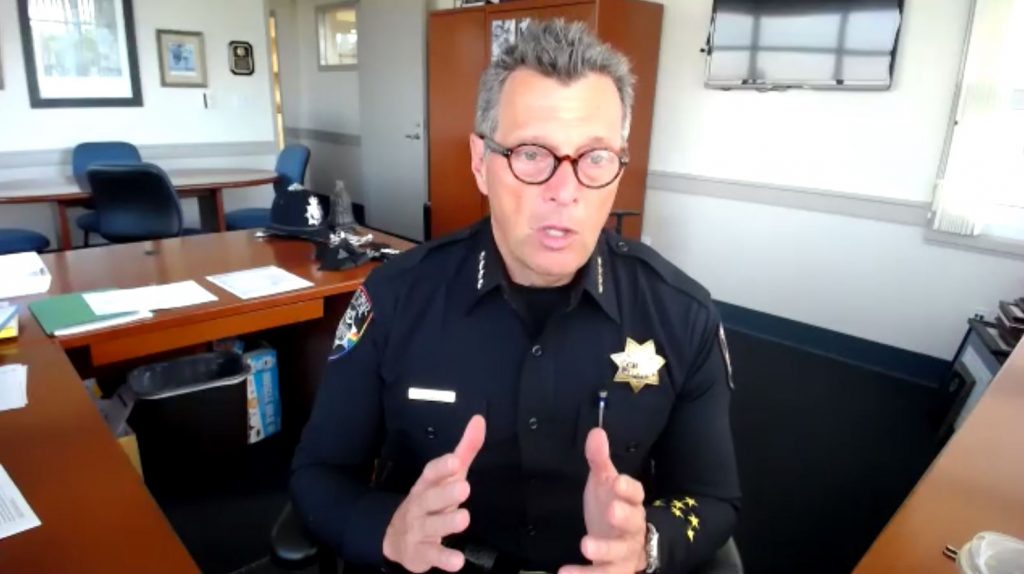
SB: Watsonville’s police chief, David Honda, shared similar thoughts at the last Watsonville City Council meeting.
DAVID HONDA: I will agree with a lot of our community members out there that we do spend too much money on policing. And there’s better options out there. But just kind of going back historically. So unfortunately, the police departments have become the default for every crisis, every emergency. We’re available 24 hours a day, seven days a week, and all you have to do is call 911. And so with the rise in homelessness and the mental health issues, unfortunately, the police have been called to be the first responders to that. And there’s really no other options, valid options, out there at this time. And trust me, my officers and I do not want to be using our resources to deal with a homelessness issue when it’s not a criminal issue. It’s actually a societal issue. It’s an economic issue. And the same with mental health. That’s not a criminal thing. But unfortunately, we’re tasked with responding to this. And people are in crisis. So we have to train our officers to do Crisis Intervention Training. We have to do de-escalation training, which is all good, but it’s more training that we have to do that costs money.
So the other thing that we want to address is the fact that when we have to respond to a mental health — a person who’s having a mental health crisis or a homeless person that is not really breaking any laws, but we get called to the scene, statistics have shown that most use of force and officer-involved shootings, more than half of those have to do with mental health issues. And so what we had to do, and it’s a good program, but I understand that there’s better ways to do it, but we created our CARE team, which is a Crisis Assessment, Response and Engagement. It’s two officers full time, and a mental health clinician funded — that we pay for — but it’s a partnership with the county.
So it’s an important program. I really believe that it has reduced the amount of force and critical incidents that we have to respond to as an organization. But again, we do those programs because there’s no other better alternative.
SB: We tried to back up Chief Honda’s stat about use of force and officer involved shootings. What we found was that 20% to 50% of fatal encounters with law enforcement involved someone with a mental illness. That’s according to the American Journal of Preventative Medicine in 2016.
SB: Getting back to our county. In 2013, the county health department partnered with law enforcement. They took on mental health calls with a new type of position.
It’s called a Mental Health Liaison. They’re trained to help officers and deputies defuse tense situations. They also connect people with mental health resources. The liaisons are unarmed, though the Sheriff’s Office liaisons wear bulletproof vests. They always show up with officers or deputies. They never show up on their own.
Watsonville police has one mental health liaison. That person is paired with an officer and works during the day Monday through Friday. Santa Cruz police has two mental health liaisons. They float among officers.
And then there’s the Santa Cruz County Sheriff’s Office. That’s the largest law enforcement agency in the county. It has about 190 deputies. They have two mental health liaisons that float among the deputies.
The liaisons also listen to the emergency dispatch radio. They can assign themselves to calls. Their hours at the Sheriff’s Office recently expanded from five days a week to seven.
All of the liaisons work during the day, not at night. So there are some gaps in their coverage. The two recent police shootings we talked about were at night.
Luke Smith was killed in November 2016. He was a 15-year-old sophomore at Aptos High School.
Luke took LSD one night with a friend. It was a bad batch of drugs. He had a mental health crisis. He stabbed his father and uncle in their home in Corralitos.
Luke’s dad called 911. He told the dispatcher, ‘Don’t kill him, he’s my son.’ The pair was taken to hospital and they survived.
About 3 a.m., deputies found Luke on a rural road.
[POLICE RADIO]
DEPUTY BODY CAMERA RECORDING: Put the knife down buddy!
SB: Capitola and Watsonville police also responded.
DEPUTY BODY CAMERA RECORDING: Keep your gun out. I’ll try and tase him, right?
SB: Luke held a folding knife. He wouldn’t drop it. Officers and deputies shot him with Taser and foam rounds. A K9 tried to get his knife. He was backed against a fence. Eventually, deputy Chris Vigil shot Luke to death with a rifle. That’s according to the district attorney’s office.
The other fatal shooting in 2016 was in October.
Sean Arlt was 32. He was a college graduate and the father of a 4-year-old. He suffered from a mental health disorder.
A few days before he was killed, he had been in police custody and Dominican Hospital because of mental health problems.
On a rainy early morning, police responded to a 911 call. It was for Sean, who had been pounding on a door of a home near Chace and Getchell streets on the Westside. The caller was a family friend and neighbor.
The caller said he knew Sean. Santa Cruz police responded.
Sean was was coaxed out of the home’s backyard. He held a hard rake over his shoulder. He walked towards police. They were in the street. They had Tasers and guns drawn. Sean advanced. He wouldn’t drop the rake. He was tased. One of the officers, Erik Bailey, was backed against a police car. He shot Sean twice with his service pistol. Sean died at the scene.
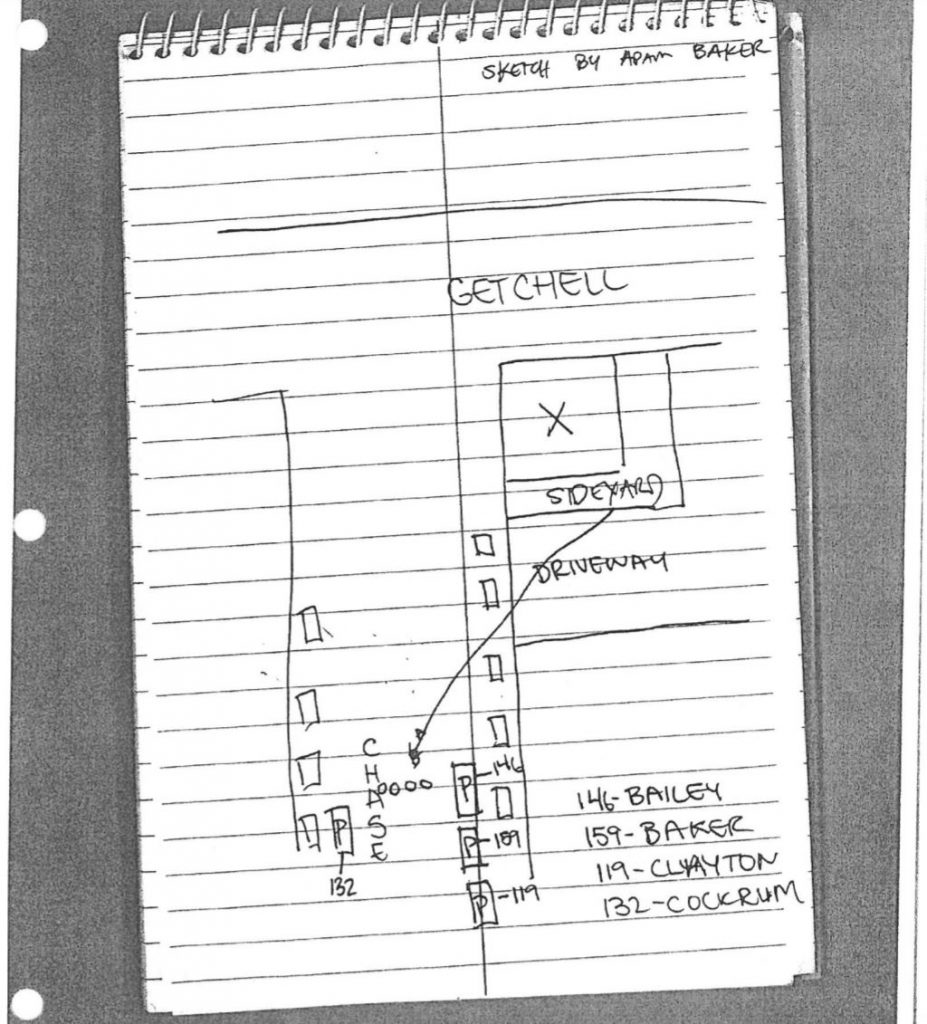
SB: The officer and deputy in the cases were cleared of wrongdoing by the district attorney’s office. Neither of them lost their job.
The city of Santa Cruz settled a civil suit with Sean’s family with a $1.6 million payout — while acknowledging no legal wrongdoing.
About six months after the shootings, the Sheriff’s Office hired a second full-time mental health liaison. That hiring was meant to assist deputies with crisis assessment and intervention.
So, could these deaths have been avoided?
Benjamin Brubaker is a co-coordinator of CAHOOTS. That stands for Crisis Assistance Helping Out on the Streets. They’re in Eugene, Oregon.
CAHOOTS has been around for about 30 years. They work with law enforcement to respond to mental health calls . Unlike our county’s mental health liaisons, these workers can be dispatched without an officer.
BRUBAKER: Many calls requesting CAHOOTS actually come from the individuals themselves or one of their friends or family that are really concerned and just trying to get them help. But then there are other calls. For instance, somebody maybe who’s having a psychotic episode out in public, that in most municipalities would go to the police under maybe the banner of, you know, disturbing the peace or something like that. Whereas the worker here will triage that and be like, well, they’re talking to themselves animatedly and cursing sometimes. That seems like the kind of call we could go and handle. If there’s a weapon involved, if there’s active threats of hurting other people, these kinds of things then would start to triage out to maybe a law enforcement response. But even with that kind of response, a lot of times they’re gonna stage just in the area. And have us nearby and many times, you know, our law enforcement partners will go in, make sure that the scene is safe, and you know, and take care of whatever issues that might not be safe, and then call us in immediately and we’ll be right there to respond and jump into the call.
SB: Last year, out of roughly 24,000 CAHOOTS calls, police backup was requested only 150 times. That’s according to CAHOOTS staff.
BENJAMIN BRUBAKER: Even in those cases that they can’t pass it directly to our teams,we can quickly free up the officer so they can clear and move on to the next thing. Once everybody there is agreed that we’re safe and we’re gonna proceed with the intervention.
I think that a program like this can save lives and reduce harm. I think it can help meet some of the need of what folks are crying out for in the street, which is a rethinking of some of our institutions and the way that they impact some marginalized communities even more.
SB: The 911 dispatchers in Eugene try to determine whether a scene is safe for an unarmed team to respond. It’s a protocol they’ve worked on for years. They’re now sharing it with other agencies across the nation. Cities as small as Coos Bay in Oregon and as big as New York. In San Francisco, a CAHOOTS-trained program is in the works.
BRUBAKER: The dispatcher is looking for safety. They know that our teams are unarmed. They also know our teams are voluntary in nature that we can’t force anybody to do anything or take custody of anyone. So they’re going to look for calls where there’s a willing participant or somebody that is clearly not doing anything “criminal” in nature that warrants a police response. But instead, it’s very much a behavioral health issue.
What we hear and again and again from our law enforcement partners is that they’re tired of being the de facto mental health response, that they know that that what law enforcement across the country — across the world — is being tasked with is dealing with the brokenness in the systems of behavioral health care, physical health care.
What we’re hearing across the nation is people demanding that we re-examine our entire care systems in our public safety response systems, and really look at what other things are needed in those communities that would help maybe head stuff off further upstream.
What are your sobering capabilities? What are your emergency shelter options? What are your outpatient, you know, and or inpatient care opportunities for people with behavioral health issues? All of those things also need to equally be examined. Because just throwing, you know, more mobile crisis at a situation may not be the only solution.
SB: To answer some of those questions:
- Santa Cruz County has had a sobering center next to the Main Jail in Santa Cruz. It served about 5,000 people in the past six years. That’s according to Janus of Santa Cruz, who ran it. It just closed this month with county budget cuts.
- Emergency shelter. County leaders acknowledge a shortage of shelter beds. They’re working to create more beds. But it’s just one piece of the homeless response puzzle.
- In terms of outpatient and inpatient mental health care: There is Telecare on Soquel Avenue in Santa Cruz. It’s a locked, acute psychiatric care facility. It has 16 beds. Patients are often sent out of the county because there’s not enough of beds.
So, could a program like Cahoots have prevented the deaths of Luke Smith and Sean Arlt?
In Luke’s case in Corralitos, law enforcement would have been called out anyway. Two people had been stabbed. A mental health worker was not on the scene when Smith was shot. It was night, and they’re not assigned to work at night.
In Sean’s case in Santa Cruz, his mental health status was mentioned to dispatchers and police that night. And it was mentioned in other emergency calls with him in the days prior. So a mental health liaison at least would have responded the night he was killed. Santa Cruz, like we said, has mental health liaisons, but again, they don’t work at night.
Here’s Santa Cruz Police Chief Andy Mills on CAHOOTS and what it might take for a program like that to work.
MILLS: CAHOOTS has been a very good program. I’ve been aware of it for many years, and would love to see something like that be installed here
The question for me becomes one of volume. Do we have enough social workers and mental health liaisons to be able to cover that and are they willing to do that without a uniformed officer? And the problem becomes, some folks get pretty violent. And so do they want to be out there without that? And if they do, then I say let’s figure out a way to make that happen. Do we apply for grant money? Do we, you know, everybody chip in a little bit here and there during this time to make that kind of program happen? Is it just a city, county or region program? I mean, there’s a lot of ways to do that.
SB: In other cities, new dispatch protocols have cost about $2 million in training and overtime.
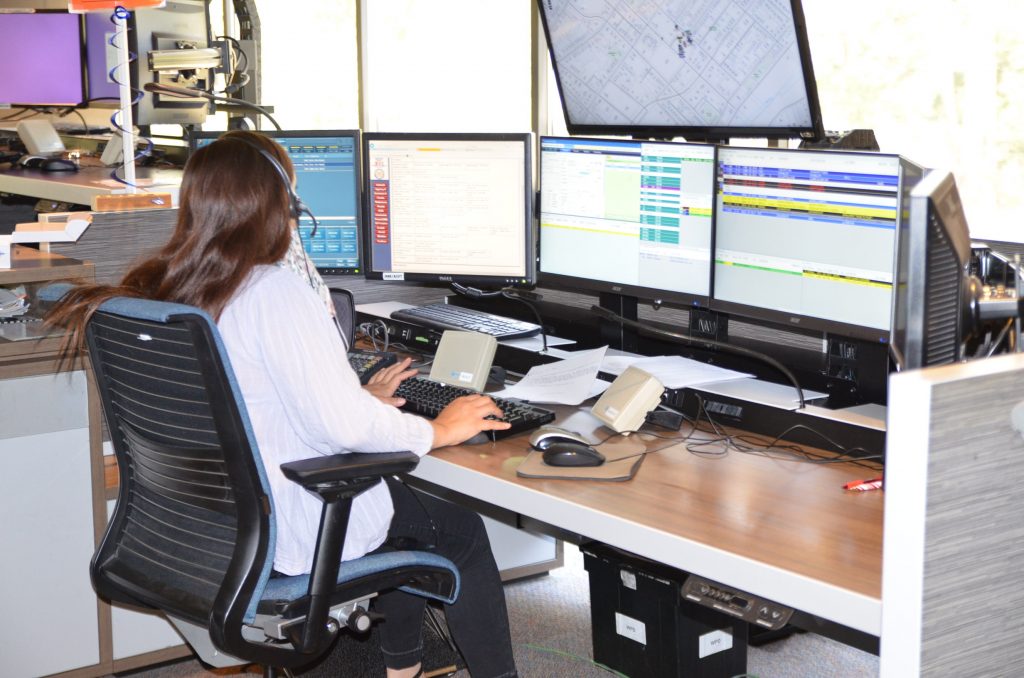
SB: In 2018 Santa Cruz County’s Civil Grand Jury took up this issue of police intervention in mental health crises. The report was prompted by the two shootings that we mentioned. The group recommended expanding the mental health liaison program to 24-hour service. They also wanted dispatchers to work on 911 protocols to let mental health workers respond without law enforcement.
You can find the grand jury report in the transcript of this episode.
The report wasn’t enough to prompt changes. The county and law enforcement had some problems with it.
They felt it would be aspirational to have mental health liaisons around the clock. But the lack of mental health calls at night wouldn’t justify the cost
Second, they said that the county couldn’t guarantee the safety of unarmed mental health workers.They cited a 2017 strangling of an unaccompanied Berkeley mental health worker. She was dispatched to a man who threatened to harm himself.
If local law enforcement were to try a CAHOOTS like program, one major problem is there’s no nonprofit group that can immediately step into that role of 24-hour, non police response.
Brubaker, the CAHOOTS co-cordinator, said it would be ideal for a group independent of the police to deal with more mental health calls. That way it shifts liabilities from police and cities. it’s not totally necessary, he said.
A spokeswoman for the Sheriff’s Office told me recently that one benefit of the current mental health liaison program is the informal on-the-job training. Deputies alongside mental health workers learn about crisis response that way.
Deputies and officers get formal training too. In the past few years, Crisis Intervention Training has ramped up in law enforcement across the county. It’s from a national model. They learn about mental health conditions and how to defuse tense situations.
If our county were to see a CAHOOTS-like model, emergency dispatchers are a piece of the puzzle. Nine-one-one calls run through dispatch. It would be up to dispatchers and their protocols to decide to send mental health workers without police.

I asked Stephanie French about it. She’s a longtime dispatcher and the operations division manager for Santa Cruz Regional 911. She said it’s possible. But dispatchers need to know who’s available and when.
The hard part is determining if a situation is threatening and requires police.
STEPHANIE FRENCH: It’s really difficult for a dispatcher to determine really what’s going on when all they have is the voice on the phone. I can’t see where you are. I can’t, you know, maybe you’re describing something to me that doesn’t make any sense because I don’t have any context to see that, to what they’re describing. And, you know, some emotionally disturbed people describe things that are just not like, you can’t even imagine what they’re seeing and you’re trying to put those things into words so that you can relay them to the responders and you just know it doesn’t make sense to anybody. But we’re the pass through of information.
A majority of our mental health calls are a non-relative caller who’s observing someone exhibiting strange behavior. And so you know, you could think of a tourist coming into Pacific Avenue and seeing someone doing weird things on a bench or talking to a trash can or something like that. So those are a majority of our calls.
SB: So if this type of call seems to be the majority of mental health related calls, it seems primed for a new kind of response. One that might not involve police.
[MUSIC]
SB: Thank you to our 468 Santa Cruz Local members. Your support makes our work possible. Thank you especially to our guardian level members: Chris Neklason, Patrick Reilly, Elizabeth and David Doolin, Elena Cohen and Steve Ritz, and the Kelley Family.
We invite you to join our Santa Cruz Local member community. Signup is at santacruzlocal.org/membership.
We also invite you to subscribe to our free email newsletter. We’re in your inbox two to three times a week. Sign up link is in our show notes.
Thanks to Trimpot for the music.
I’m Stephen Baxter. Thanks for listening to Santa Cruz Local.
Advertisement: This episode was sponsored by Santa Cruz Works, your connection to our area’s thriving tech and business community. With over 5,000 members Santa Cruz works gives you access the largest monthly tech events. Solutions for your startups and businesses. Connections to the hottest jobs and the latest news about local companies, their stories and best practices. Subscribe free to the Santa Cruz Works weekly newsletter today. SantaCruzWorks.org/podcast.
Stephen Baxter is a co-founder and editor of Santa Cruz Local. He covers Santa Cruz County government.

